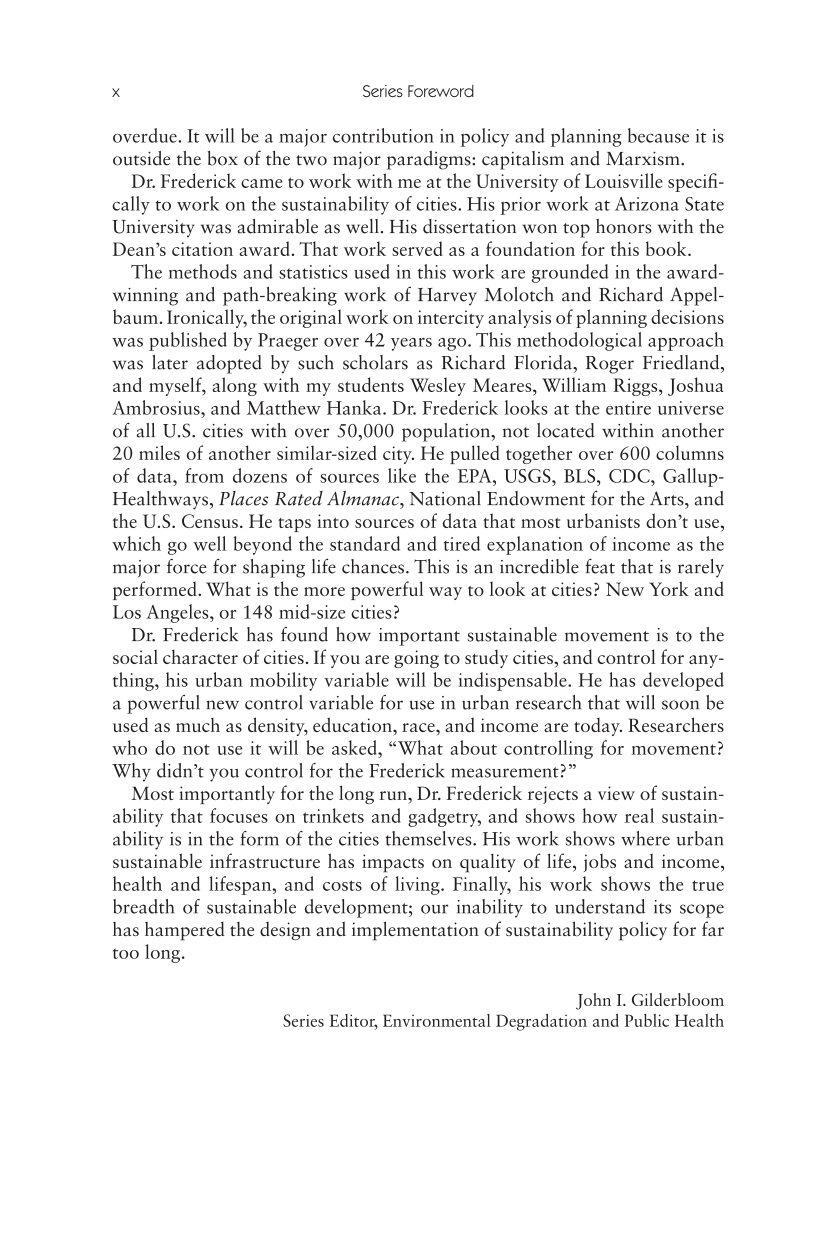x Series Foreword
overdue. It will be a major contribution in policy and planning because it is
outside the box of the two major paradigms: capitalism and Marxism.
Dr. Frederick came to work with me at the University of Louisville specifi-
cally to work on the sustainability of cities. His prior work at Arizona State
University was admirable as well. His dissertation won top honors with the
Dean’s citation award. That work served as a foundation for this book.
The methods and statistics used in this work are grounded in the award-
winning and path-breaking work of Harvey Molotch and Richard Appel-
baum. Ironically, the original work on intercity analysis of planning decisions
was published by Praeger over 42 years ago. This methodological approach
was later adopted by such scholars as Richard Florida, Roger Friedland,
and myself, along with my students Wesley Meares, William Riggs, Joshua
Ambrosius, and Matthew Hanka. Dr. Frederick looks at the entire universe
of all U.S. cities with over 50,000 population, not located within another
20 miles of another similar-sized city. He pulled together over 600 columns
of data, from dozens of sources like the EPA, USGS, BLS, CDC, Gallup-
Healthways, Places Rated Almanac, National Endowment for the Arts, and
the U.S. Census. He taps into sources of data that most urbanists don’t use,
which go well beyond the standard and tired explanation of income as the
major force for shaping life chances. This is an incredible feat that is rarely
performed. What is the more powerful way to look at cities? New York and
Los Angeles, or 148 mid-size cities?
Dr. Frederick has found how important sustainable movement is to the
social character of cities. If you are going to study cities, and control for any-
thing, his urban mobility variable will be indispensable. He has developed
a powerful new control variable for use in urban research that will soon be
used as much as density, education, race, and income are today. Researchers
who do not use it will be asked, “What about controlling for movement?
Why didn’t you control for the Frederick measurement?”
Most importantly for the long run, Dr. Frederick rejects a view of sustain-
ability that focuses on trinkets and gadgetry, and shows how real sustain-
ability is in the form of the cities themselves. His work shows where urban
sustainable infrastructure has impacts on quality of life, jobs and income,
health and lifespan, and costs of living. Finally, his work shows the true
breadth of sustainable development; our inability to understand its scope
has hampered the design and implementation of sustainability policy for far
too long.
John I. Gilderbloom
Series Editor, Environmental Degradation and Public Health






























































































































































































































































